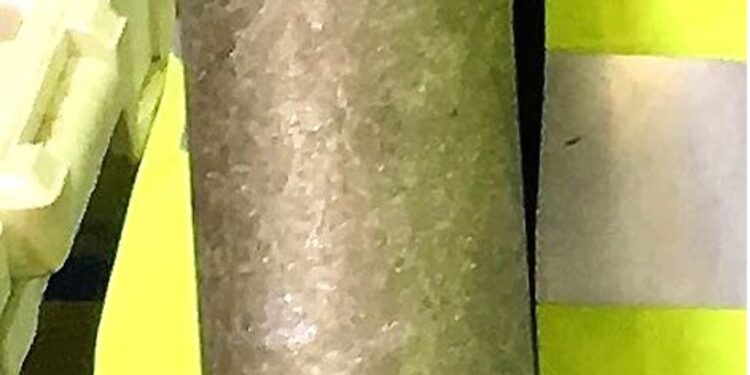RC Drilling Has Resumed At High-Grade Mt Alexander Project
St George Mining Limited (ASX: SGQ) has begun its latest round of drill testing of nickel-copper sulphide at its flagship high-grade Mt Alexander Project, located in the north-eastern Goldfields.
Executive Chairman, John Prineas, said the company has an exciting pipeline of nickel-copper sulphide targets.
“These early-stage targets have been generated by our ongoing exploration of the 100% St George owned tenements at Mt Alexander. These targets offer an excellent opportunity to expand the footprint of mineralisation at Mt Alexander with a new discovery.
“Infill drilling will also be undertaken at the Cathedrals Prospect, where high-grade nickel-copper sulphides have been intersected at shallow depths across a strike length of more than 200m.
“The high-grade mineralisation at Cathedrals – typified by intercepts of massive nickel-copper sulphides like MAD056 – highlights how special Mt Alexander is. The combination of high-grade nickel, copper, cobalt and platinum group metals is simply not seen anywhere else in Australia.
“With nickel prices powering ahead on rising battery metal demand, Mt Alexander is well positioned to attract attention from investors looking for proven high-grade nickel sulphide discoveries.”
The first holes to be drilled in the current programme will be at the newly defined Carnac Prospect, on St George’s 100% owned E29/1041.
Initially, seven drill holes are planned for Carnac with an average downhole depth of 100m to confirm the presence of mafic-ultramafic intrusive-style rocks and/or nickel and copper anomalism.
northeast across the tenement for more than 8km. Anomalous values for nickel, copper and chromium were returned by a soil survey partly completed over this trend.
The distribution of the anomalous soil values correlates to the shape of the strong linear magnetic trend and supports the interpretation that the magnetic trend may represent a mafic intrusive unit – similar to the east- northeast oriented Cathedrals Belt – with potential to host nickel-copper sulphide mineralisation.
The airborne magnetic survey completed earlier this year over E29/972 identified a very strong magnetic anomaly. The magnetic high has a strike length of approximately 600m and a width of 250m.
The shape and location of the magnetic feature is unusual for the area and notably different to the largely granitic rocks in the vicinity of the anomaly. Magnetic features such as this may represent a late-stage intrusion that could be prospective for base metals or gold.
Initially, two drill holes with an average downhole depth of 150m will be completed at this target.
The holes will aim to identify the source of the strong magnetic signature.
If intrusive lithology is present, drill results will also assist to determine its prospectivity to host any mineralisation.
Drilling at E29/962
E29/962 hosts the southern extent of a north-south oriented ultramafic belt (the Eastern Belt) that lies parallel and to the east of the main Mt Alexander ultramafic belt.
The main Mt Alexander Belt is an Archaean greenstone belt. This belt is known to host komatiitic ultramafics and associated nickel sulphides, rather than the mafic-ultramafic intrusive-style nickel sulphides found within the Cathedrals Belt. The Eastern Belt is interpreted to be part of this prospective Archaean sequence.
Historical exploration by WMC Resources at the Eastern Belt included a soil survey that returned anomalous values indicative of nickel sulphide mineralisation.
The large and coherent geochemical anomaly, with a strike of more than 200m and 120m traverse, returned figures of up to 2,010ppm Ni, 100ppm Cu and 245ppm Co.
Follow-up drilling was only shallow and interpreted to have been limited in its effectiveness in testing the area.
Initially, five drill holes with an average downhole depth of 150m will be completed by St George at the Eastern Belt – at a new prospect named Jailbreak.
The holes will test the basal contact of the upper and lower ultramafic units and will be cased in PVC to allow downhole EM surveys to be completed.
Cathedrals Prospect – Infill Drilling
Drilling by St George has confirmed that high-grade nickel-copper sulphide mineralisation at the Cathedrals Prospect commences from 30m below surface and has formed in two deposits.
The upper deposit is largely between 30m to 80m below surface and hosted within the intrusive Cathedrals mafic-ultramafic.
The lower deposit has formed in the footwall fault and is between 120m to 200m below surface. In both cases, mineralisation extends for a strike length of more than 200m.
For further information please visit: https://stgm.com.au/












